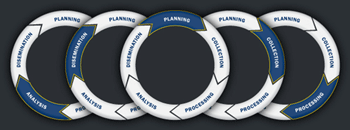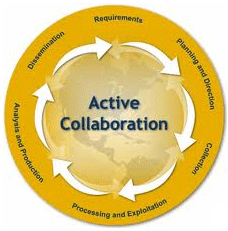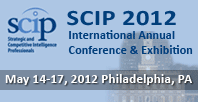|
|
||
 |
||
|
|
POINT OF VIEW Let’s Kill the Intelligence Cycle… Or Not
The intelligence cycle is a depiction of how the intelligence process works, and dates back to WWII. Does it still work in the 21st century? One of my favorite intelligence blogs, Sources and Methods, is written by Kristan Wheaton, a professor at Mercyhurst College. Last year he ran an 11-part series on the utility and appropriateness of the traditional intelligence cycle in the current environment, based on his research on the intelligence process. Kris’ thesis is that the current depiction of the “intelligence cycle” is fatally flawed. Not everyone agreed with him, but it was a lively discussion. Here are several points worth considering: Why care about the intelligence cycle? Many (if not most) of the intelligence functions in companies have built their personnel, processes and budgets around the intelligence cycle concept. If the intelligence cycle is flawed (either by design or interpretation), this results in the misallocation of funds and requires work-around solutions. It can also result in a mismatch between skills and competencies needed vs. skills and competencies acquired. What is the intelligence cycle? Virtually every organization or company that has even a modest intelligence capability has and uses a picture similar to this one:  http://www.nrojr.gov/teamrecon/res_nro-whatwedo.html Indeed, many private sector practitioners have built much of their marketing campaigns touting the benefits of this cycle. This traditional image is so pervasive that it has become the generally accepted vision of how intelligence professionals perform the functions of intelligence, although the details can vary dramatically. Which intelligence cycle? Some critics of the intelligence cycle say that what appears to be a theoretical monolith is actually open to a wide variety of interpretations, resulting in a series of intelligence cycles, each substantively different from the rest.  http://intelligence.gov/about-the-intelligence-community/how-intelligence-works/ A recent Google image search on “intelligence cycle” retrieved hundreds of visual variations of the cycle. How does it match reality? Many authors have claimed that the intelligence cycle, as generally described, does not reflect the reality of how intelligence is actually done. The simplicity of the cycle, to these critics, is both seductive and deceiving. According to Wheaton “there is virtually no knowledgeable practitioner or theorist who claims that the cycle reflects, in any substantial way or in any sub-discipline, the reality of how intelligence is actually done.” While personally I wouldn’t go that far, I do agree that the intelligence cycle is linear and intelligence, as practiced, is not. Each element of the “cycle” interacts with the others. Collectors and analysts will inevitably go back and forth as the analysts attempt to add depth to their reporting and as the collector develops new collection capabilities. Decision-makers often remain involved throughout the process, seeking status reports and perhaps even modifying the requirement as new information or preliminary analysis becomes available.  http://www.fbi.gov/about-us/intelligence/intelligence-cycle And here’s my favorite: a depiction of the sense-making loop for intelligence analysis by Peter Pirolli and Stuart Card of PARC  While I’ve just touched on some of Wheaton’s summations and analysis of the intelligence cycle, his full posts – and the comments connected to them – do provide a different approach to modeling the “intelligence cycle.” It’s well worth reading through them here. About the Author Bonnie Hohhof is the director of competitive research for SCIP and the editor of Competitive Intelligence Magazine. She has over 25 years of corporate experience, including the Corporate Strategy Offices of both Ameritech and Motorola. A charter member of SCIP, she also served on their Board of Directors, founded and edited the Competitive Intelligence Review and received the SCIP Fellow and Meritorious awards. She has a BA in Political Science from Northwestern University, an MS in Information Sciences from Dominican University and an MBA from Roosevelt University. She can be reached at bhohhof@scip.org, or 630-469-0732. |
|
||||||||||||||||||||||||||||||||||||||||||||||||||||||||||||||||||||||||||||||||||||||||||||||||||||||||||||||||||||||||||||||||||||||||||||||||||||||||||||||||||||||||||||||||||||||||||||||||||||||||
|
© 2012 Strategic and Competitive Intelligence Professionals |






